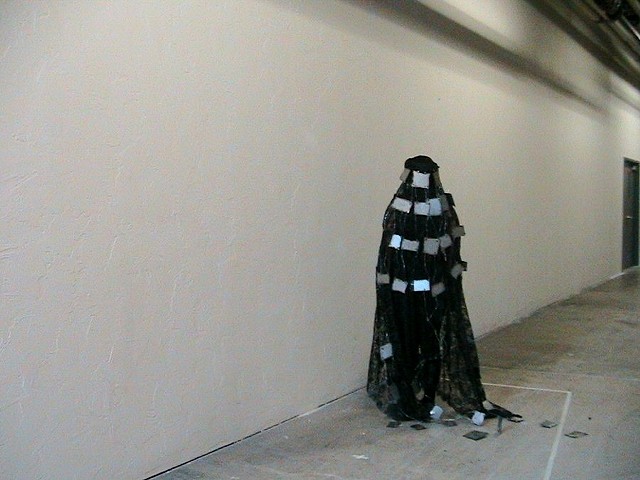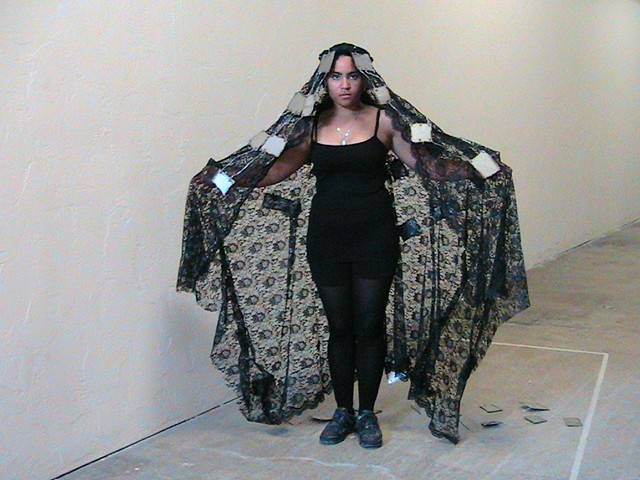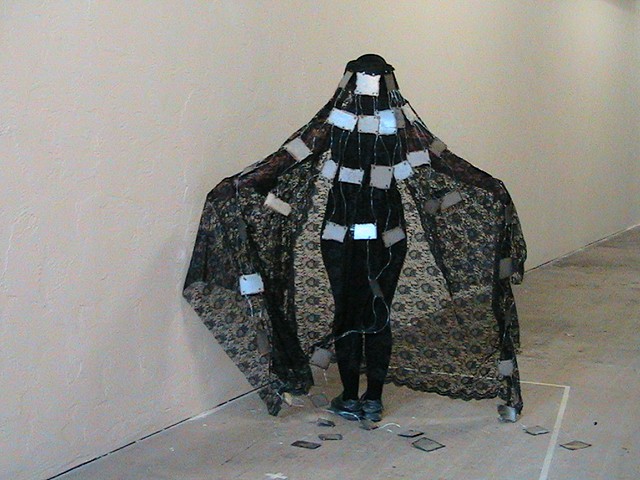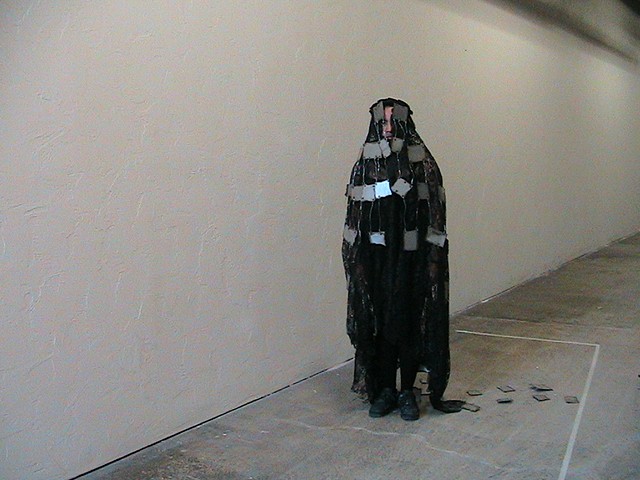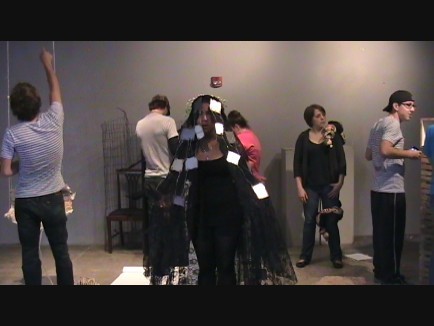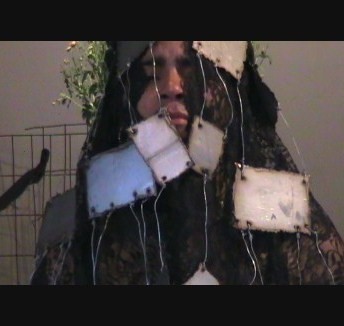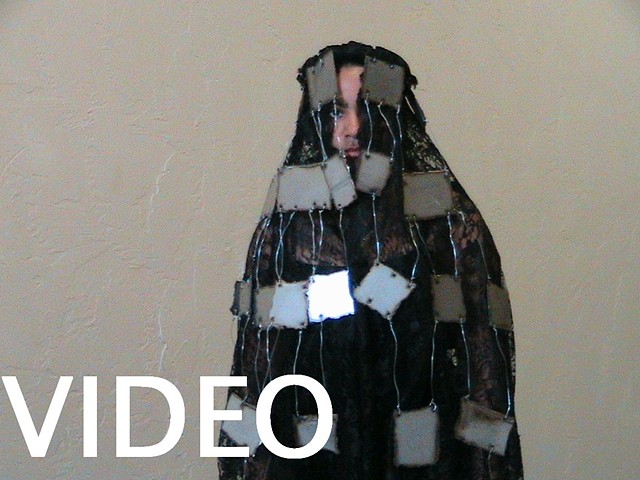The Veil (2011)
In my final piece, The Veil (2010) served as a metaphor for the walls that people build to protect themselves from the sorrow and pain of life. Yet, these walls that are meant to protect become cages; self-made prisons that are constant reminders of that which the person is attempting to guard against. Many cultures use the veil as a vehicle for defense or repelling pain, sorrow, and corruption. In Western culture, the veil is used at wedding as a sign of virginity and purity but also a reminder that virginity is soon to be lost. At funerals the veil is a sign of mourning; a constant reminder of death. In the Middle East, The veil worn by many women is seen as a form of modesty and devotion to God. The Hijab secludes and conceals, forming a separation, to mask. The sign of devotion is seen by outsiders of the religion as a constant reminder of oppression to women; a prison that the women of the Middle East comply with, under the control of a male run regime.
Though they are intended to protect, and serve as a form of relief from the pain of life, veils act as a constant reminder of the pain, corruption, and sorrow, not only to the wearer, but also to all that see it; turning the veil into a self inflicted prison, that holds in the sorrow, corruption, and pain. In the performance that accompanied the veil, I wore the piece for an hour while walking through the sculpture studio. By the end of the performance I was in tears, exhausted, and in pain from its weight and claustrophobic quality. My experiences with the veil and the visible stress from the performance conveyed that the walls built up to protect, can actually become a self made prison that degrades the mind and body.
